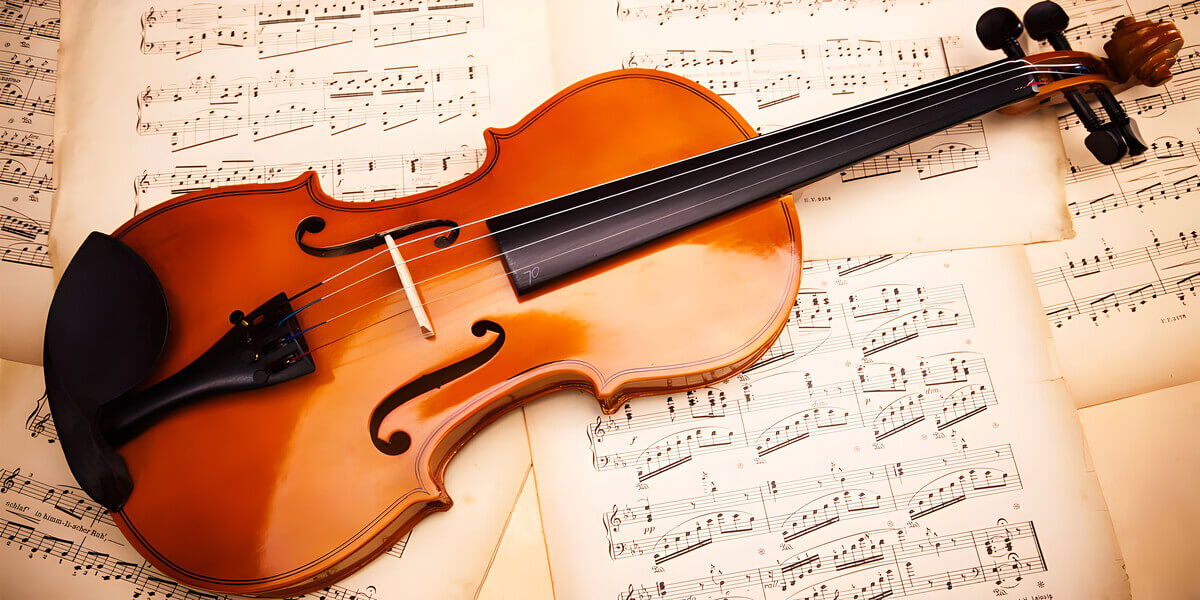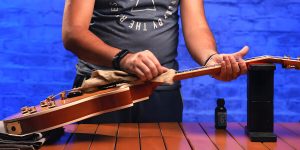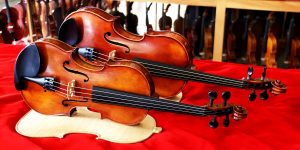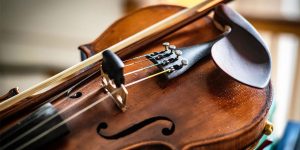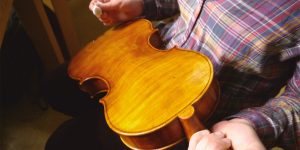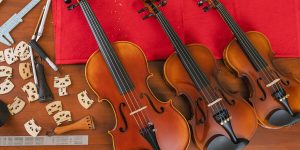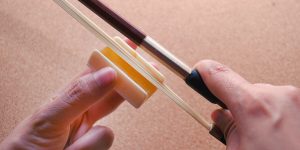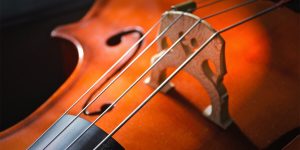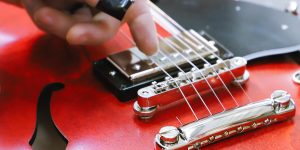If the soul-stirring melodies of a violin have ever enchanted you, you’re in for a treat. Join me on a fascinating exploration of the artistry of violin-making. Together, we will uncover the intricate violin parts names that make up this exceptional musical instrument.
Parts of a violin
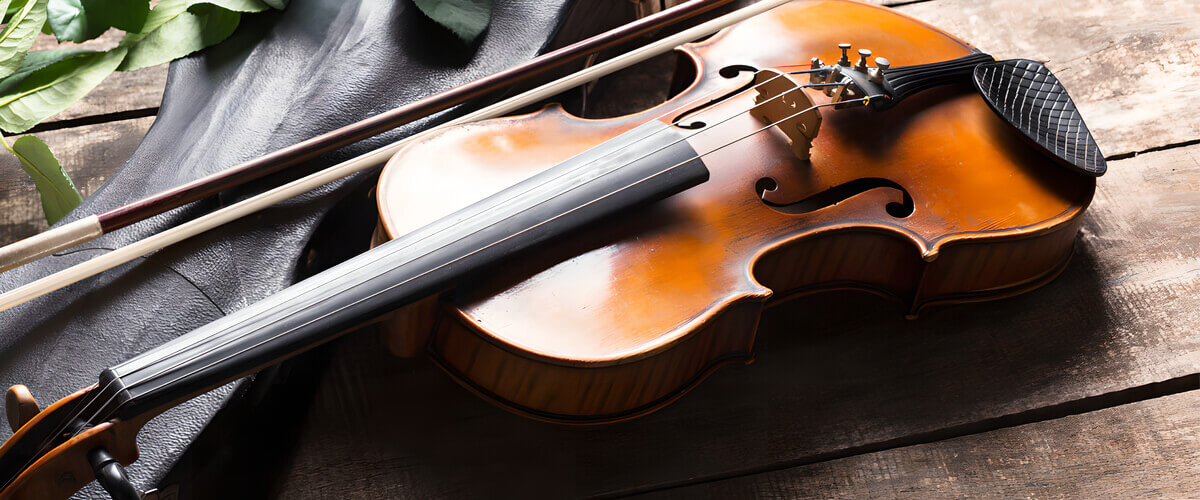
Body and neck
At the heart of the violin’s allure lies the artful harmony of its body and neck. Crafted from select tonewoods like spruce for the top and maple for the back and sides, the body’s contouring and thickness contribute to its resonance and tonal richness. The neck’s elegant curve ensures ergonomic playability, while its wood type affects the instrument’s overall timbre.
Scroll and pegbox
Ascending the neck, you’ll encounter the scroll, a signature of violin craftsmanship. Beyond its aesthetic charm, the scroll houses the pegs in the pegbox, fundamental to the violin’s tuning stability. The wood choice here is about visual appeal and resonance transmission to the body.
Fingerboard
Beneath the scroll, the fingerboard extends, offering a smooth surface for the fingers to navigate. Often crafted from ebony for its durability, the fingerboard’s length and curve are meticulously designed for precise intonation. The material’s density influences the transmission of vibrations from the strings to the body.
Tailpiece and fine tuners
The tailpiece anchors the strings at the instrument’s lower end. It plays a role in maintaining the right tension across the strings, a factor crucial for tonal consistency. Some tailpieces are built from materials like ebony or boxwood, affecting both aesthetics and resonance. These components of a violin offer minute pitch adjustments, impacting string tension and resonance.
Bridge
The delicate yet indispensable bridge sits between the F holes on the violin’s top. Its design, curvature, and placement significantly influence the instrument’s tonal projection and balance. Crafted from dense wood, it transmits string vibrations to the body, shaping the violin’s sound.
F Holes
The violin’s F holes are not mere ornaments but acoustic apertures. Positioned symmetrically on the top, they enable the release of sound waves from within the instrument, contributing to its resonance and volume. These violin body parts’ size and shape are precision-engineered to optimize sound production.
Soundpost
Inside the violin, the soundpost discreetly stands beneath the treble side of the bridge. This small dowel is instrumental in fine-tuning the instrument’s resonance. Its placement, carved from spruce, ensures optimal vibration transmission between the top and back plates, shaping the violin’s unique voice.
Chin rest
To the left of the tailpiece, the chin rest provides ergonomic support. Crafted from various materials, including wood or plastic, it enhances player comfort during extended performances. Its weight and placement also can subtly affect the instrument’s vibrations and tonal qualities.
Tail gut
Bearing silent responsibility, the tail gut connects the tailpiece to the bottom block. Its tensile strength and flexibility are vital for maintaining structural integrity while allowing the violin to resonate freely. Its material composition influences its impact on sound transmission.
Parts of a violin bow
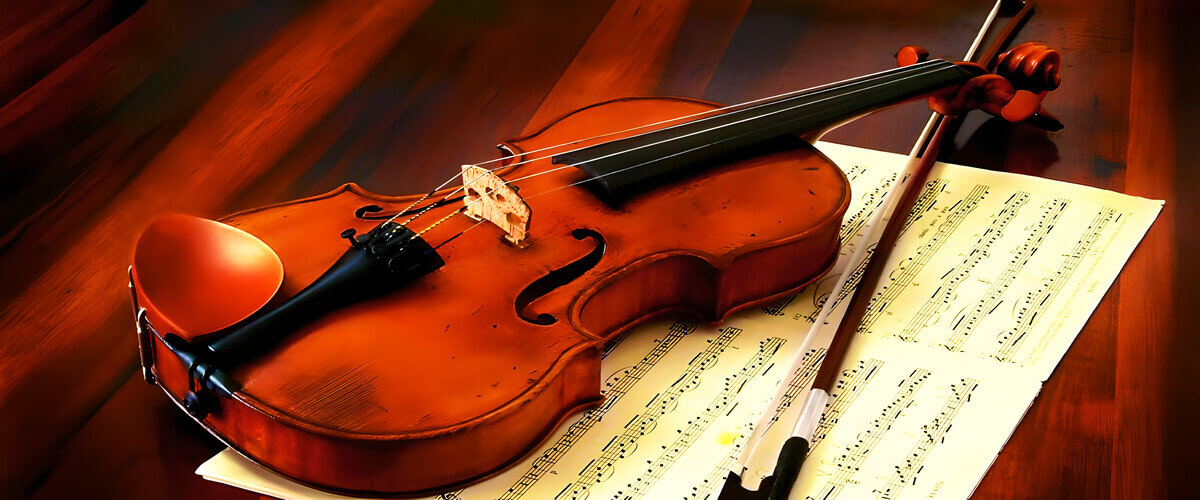
Stick
The soul of the bow, the stick, is usually crafted from wood, creating a balanced yet flexible foundation. Its resilience and weight distribution are pivotal in producing a wide range of tones.
Frog
Situated at the lower end of the bow, the frog is a decorative piece often adorned with a mother-of-pearl eye. It houses the bow’s mechanical components, allowing the player to control the tension of the bow hair.
Screw and Adjuster
These unsung heroes allow you to tweak the tension of the bow hair. By turning the screw, you can fine-tune the bow’s responsiveness, which in turn affects the dynamics of your performance.
Bow Hair
The delicate yet resilient horsehair is stretched taut between the frog and the tip. It’s responsible for drawing those heavenly sounds from your violin strings, making the quality of the bow hair a vital consideration.
Wedge
A tiny yet crucial piece, the wedge secures the bow hair into the frog. This simple element ensures that the hair remains securely in place during intense performances.
Slide
The slide, also known as the winding, adds an elegant touch to the bow’s design. It reinforces the bow where the player’s hand comes into contact with the stick, enhancing durability.
Thumb Cushion
This inconspicuous cushion provides a comfortable grip for your thumb, allowing for extended practice sessions without discomfort.
Understanding the roles of these parts of a violin bow will deepen your appreciation for the artistry and engineering of crafting a violin bow. Each component contributes to the bow’s balance, responsiveness, and tonal qualities, culminating in an instrument that can breathe life into timeless and modern compositions. Also, you can familiarize yourself with important recommendations for violin bow maintenance.
Whether you’re a beginner in playing the violin or a fan of its music, take a moment to appreciate the intricate interplay of the bow and strings. Together, they create enchanting notes that touch the heart.

